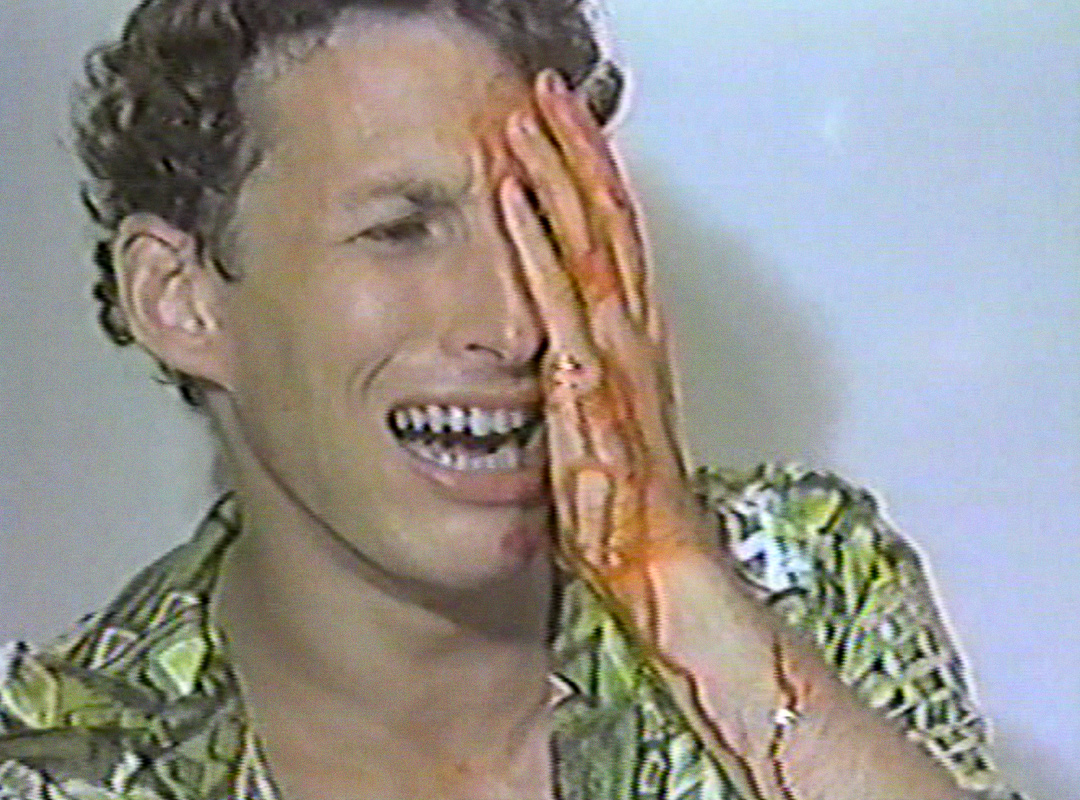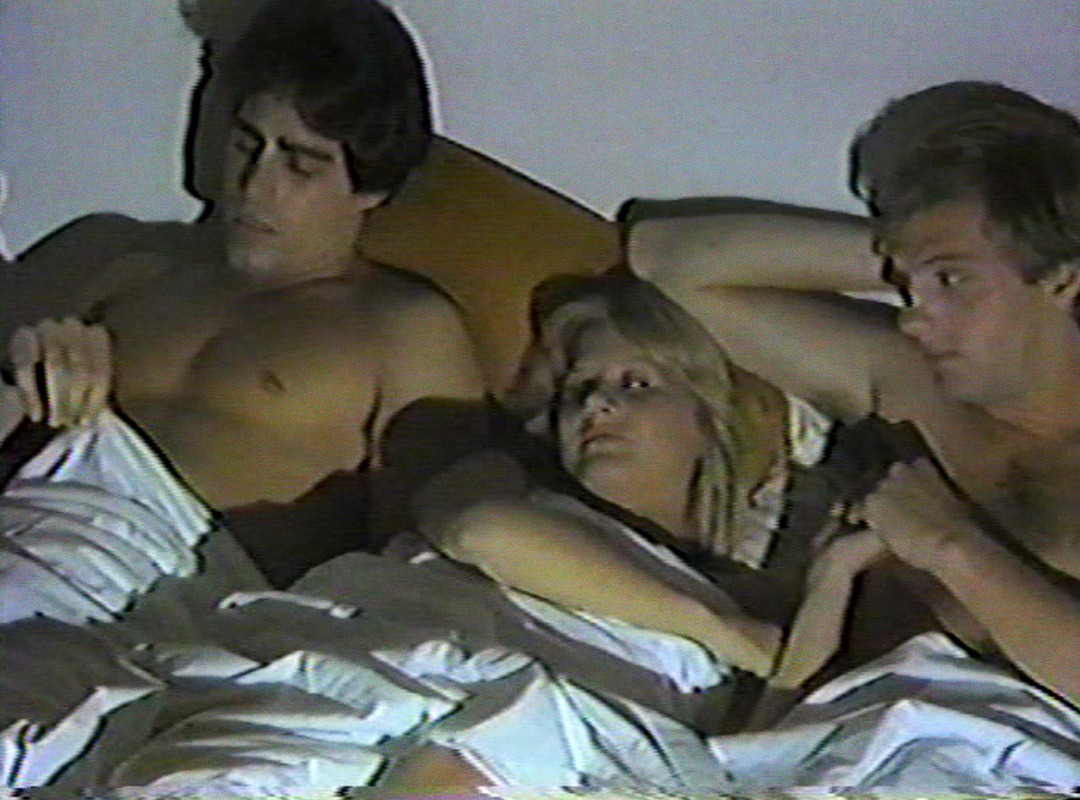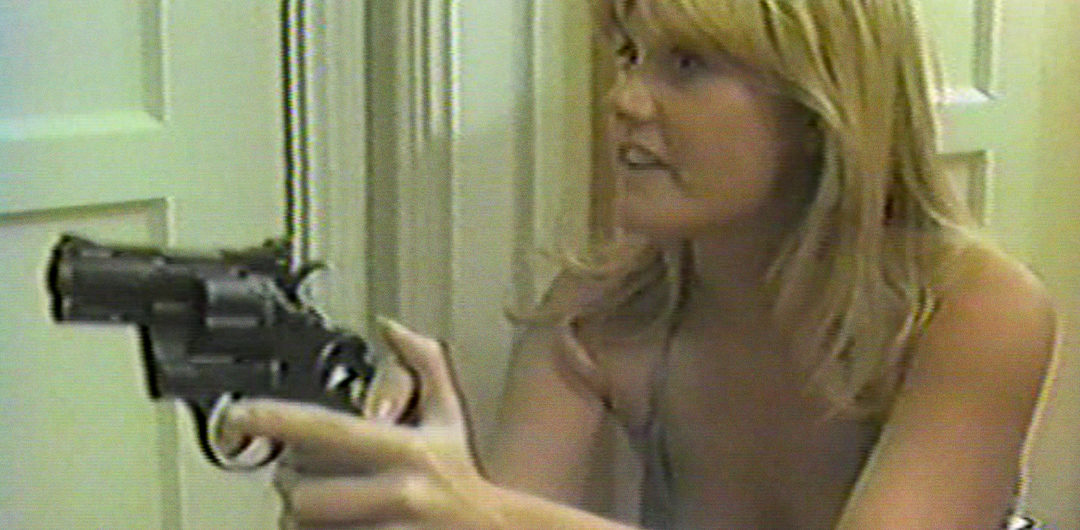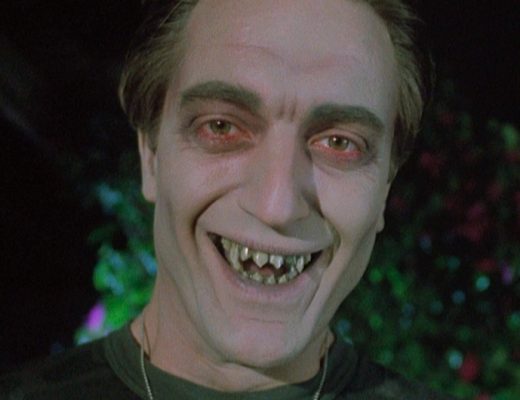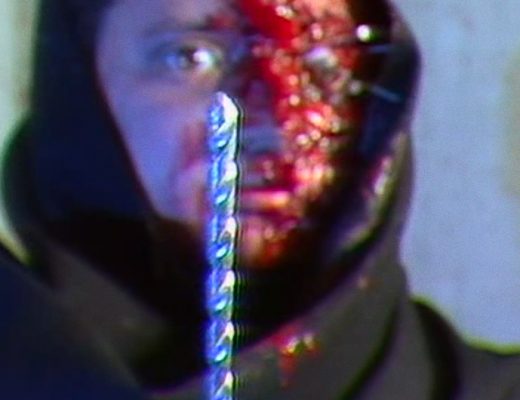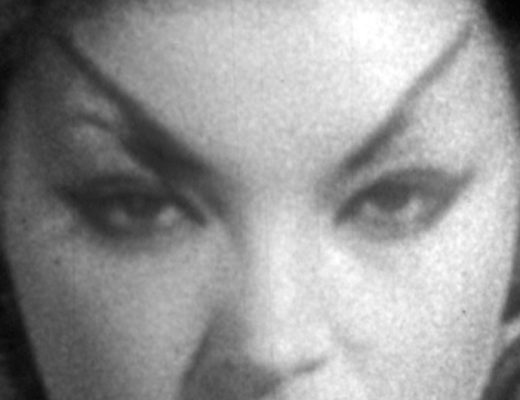Pizza.
Solo dance parties.
Humping.
These are the building blocks of existence, according to teenage southern baptist Tammy. Her upright parents have an opposing stance on the subject, but find it impossible to control Tammy’s rampaging desires following the family’s relocation from Mississippi to the California suburbs. Dopey dad Vern continuously throws his hands in the air, while fundamentalist banshee stepmom Clorette declares a holy war against their hellspawn’s transgressions. Their crass insults and devotional admonishments only cease when Clorette spots a well-coiffed crooner on the TV: “My favorite Christian entertainer… Pat Goon!”
But Tammy is unimpressed, much more interested in blasting Angry Samoans cassettes and dancing in her underwear. She drops some F-bombs and calls her stepmother the C word, but the domestic chaos reaches its apex when Clorette finds the girl’s diaphragm. This earns a spanking from Vern, who later feels drunken guilt and approaches her in his briefs, offering to “kiss her bottom better.” He reminisces about how he used to let her “dress in mommy’s stiletto heels and walk all over his face.”
After Tammy avoids a forced enema from Clorette, their home is invaded by a hunky armed intruder named Link. He ties Tammy up, berates her and reveals that he’s just escaped from prison, where he was held for various auto thefts, rapes and murders. Within minutes, they share the following exchange:
TAMMY: I think I’m in love with you.
LINK: Aw baby… the last girl who said that to me got her head knocked off when she stood up at the top of a roller coaster.
Romance blooms as the pair spends their days intertwining loins and exterminating innocents. But the endless rumpus falters in the looming shadows of one-eyed homicidal lesbians and former prison boyfriends, and everything soon spirals into apocalyptic, suicidal oblivion. Their lawless descent finally explodes in a sadistic poisoning scheme that wipes out every park-goer at Disneyland; a scene that was illegally shot inside the guarded gates of the actual Magic Kingdom™.
This last bit of daredevilry is exactly what makes Blonde Death a major triumph in the shot-on-video universe. True fearlessness is nearly nonexistent in movies of any budget, and the film’s performances, dialogue and pacing match this inspiring recklessness at every turn. Characters offend with razor wit and expire at lightning speed, drawing possible dismissive comparisons to early John Waters, though Blonde Death is honestly as strong as Waters’ best. All the more impressive is the fact that the entire production was completed for under $2000.
Most of the credit goes to writer/director/producer “James Dillinger,” actually playwright, novelist, and self-proclaimed anarchist James Robert Baker. Described as “the world’s angriest gay man” by the press, Baker spent his life at war with America’s concepts of family, religion, politics and entertainment. He kept a particularly splintery chip on his shoulder for the Disney empire, as evidenced by his only other directorial effort, 1978’s Mouse Klub Konfidential, about a fresh-faced Mouseketeer who becomes a gay bondage pornographer. In addition to its obvious legal risks, the feature was accused of advocating Nazism, and reportedly caused Michael Medved to abandon his dreams of filmmaking to become a movie critic.
Baker spent the next two decades churning out equally incendiary, monocle-spinning work, and was eventually shunned by publishers and the live theater community alike for his tireless negative rage. At the age of 51, he chose to end his life via carbon monoxide poisoning in his garage (exactly how two of his lead characters perish in Blonde Death). His suicide was his supreme venomous bird-flip to the world, and though I wish he could be alive to read this praise of his work, the brilliant and overlooked James Robert Baker—to his credit—wouldn’t give a shit.
